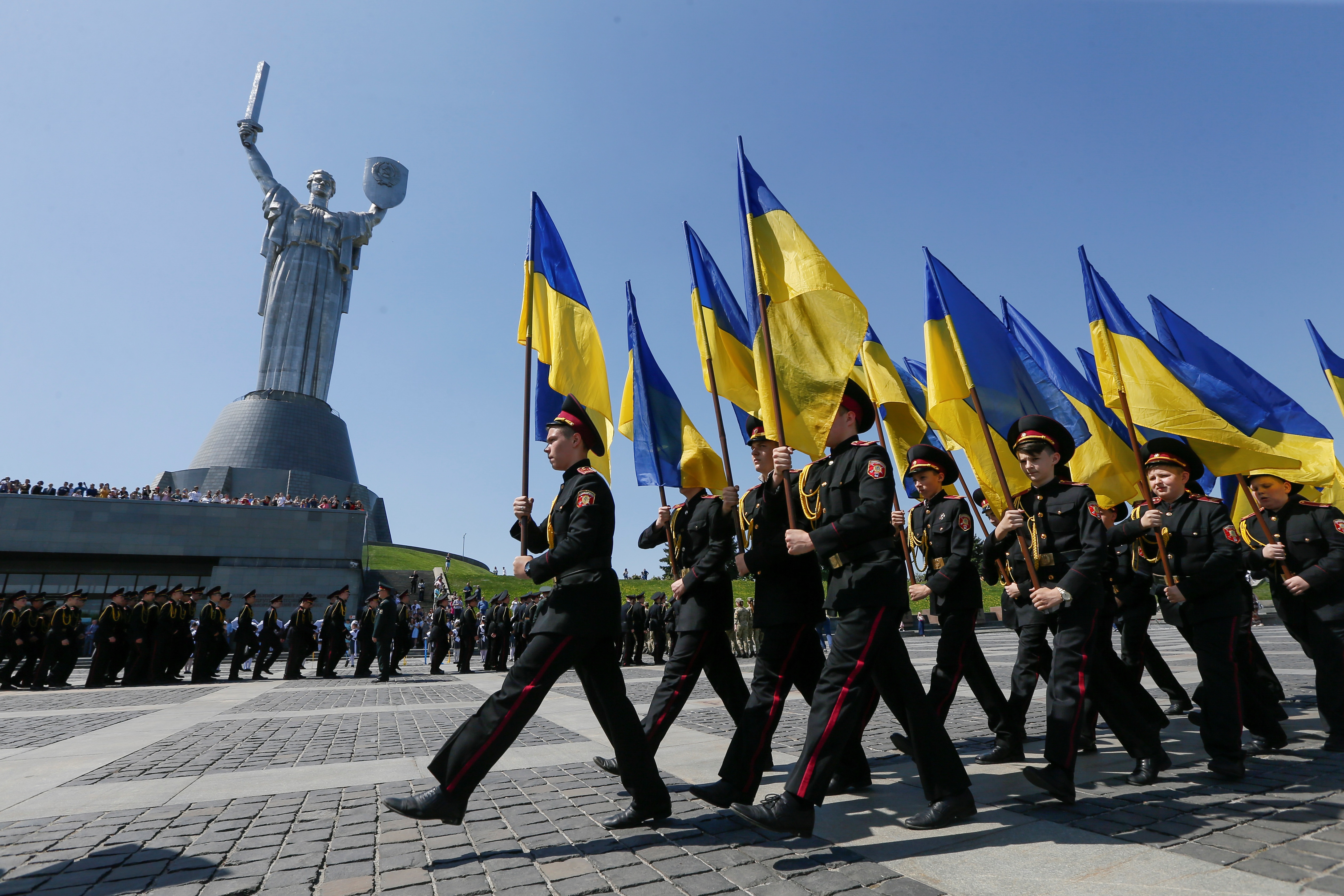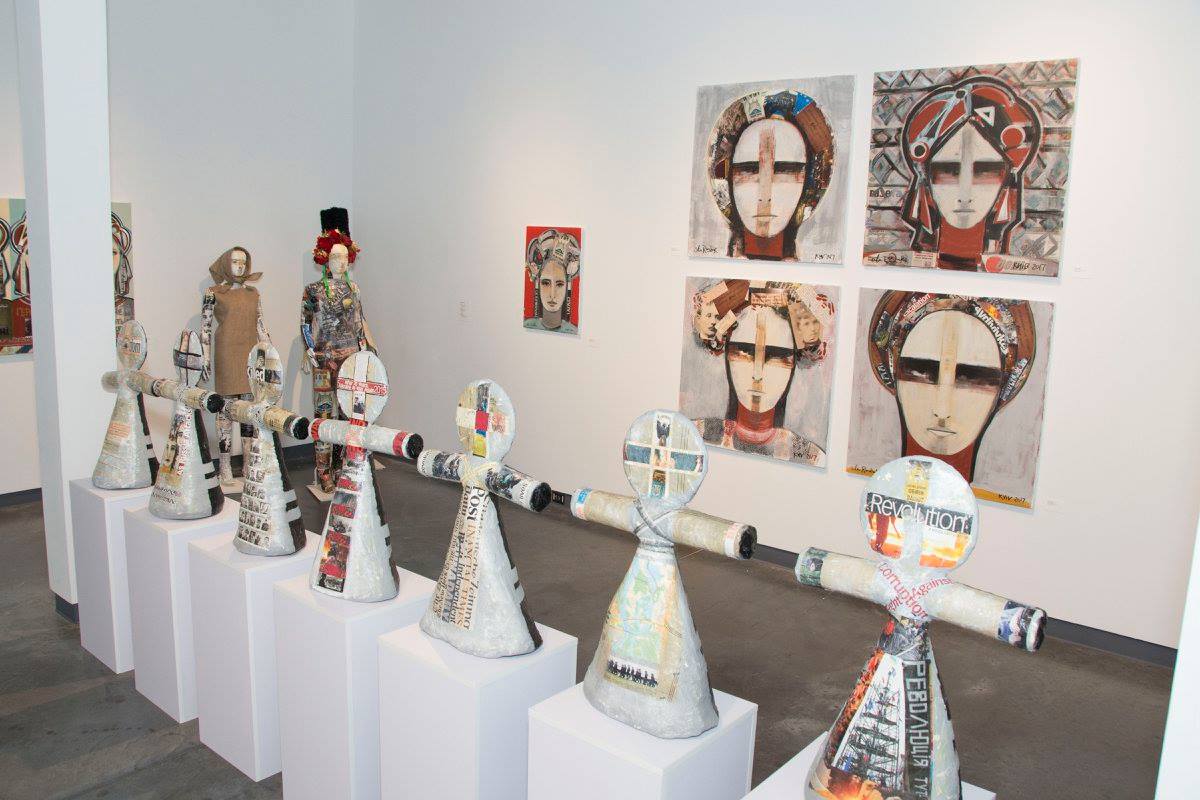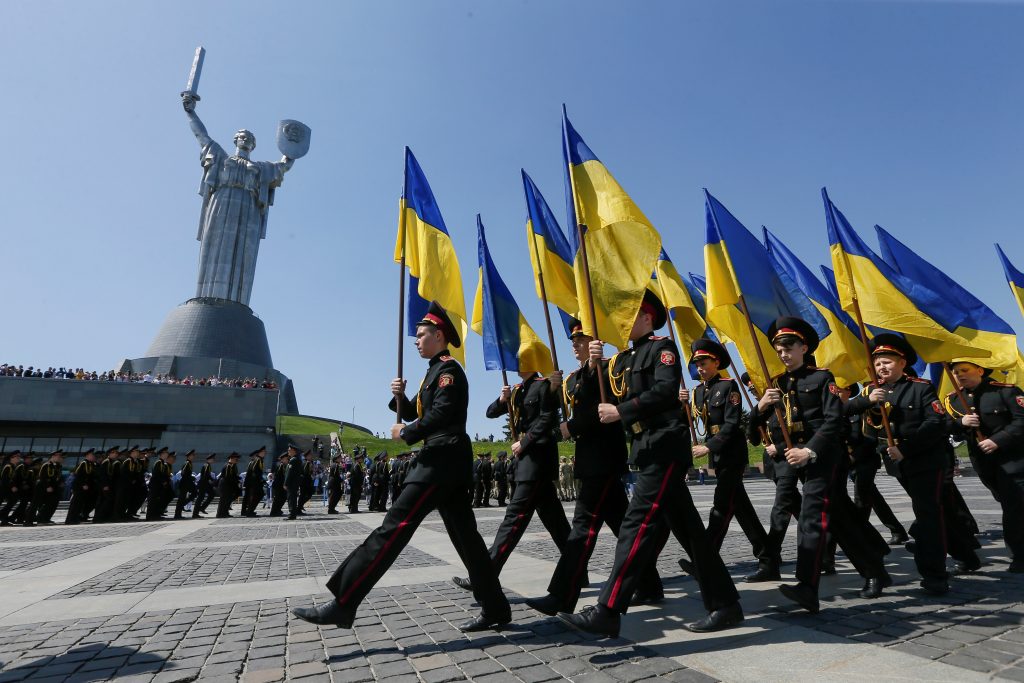 Ukraine’s post-Maidan leadership has focused on building patriotism to unite the nation as it suffered from turbulence and war. The patriotism that emerged from the Euromaidan promoted a nationalistic symbolism that rejected and replaced the prevailing Russian and Soviet identities. But instead of uniting the country, the current effort has expanded the divide between Ukrainians who absorbed the Soviet Union as an element of their identity and those who see it as a forcibly-planted mythology. Violent confrontations often characterize the divide between these two perceptions.
Ukraine’s post-Maidan leadership has focused on building patriotism to unite the nation as it suffered from turbulence and war. The patriotism that emerged from the Euromaidan promoted a nationalistic symbolism that rejected and replaced the prevailing Russian and Soviet identities. But instead of uniting the country, the current effort has expanded the divide between Ukrainians who absorbed the Soviet Union as an element of their identity and those who see it as a forcibly-planted mythology. Violent confrontations often characterize the divide between these two perceptions.
The May 9 Victory Day holiday that commemorates the defeat of Nazi Germany was celebrated throughout the Soviet and post-Soviet space. Before the Russian invasion, May 9 was the most popular holiday in Donbas and Crimea, and was a popular holiday in the rest of the country. In 2010, 58 percent of Ukrainians recognized it as their favorite celebration. This dropped to 37 percent in 2017, after Crimea and part of Donbas were invaded, and fell to 31 percent this year, according to a survey by the Kyiv International Institute of Sociology. However, even with reduced support for the holiday, it is accompanied by clashes on this day every year in the biggest Ukrainian cities: Kyiv, Kharkiv, Dnipro, Zaporizhia, Odesa.
“On the one hand, it was a major Soviet holiday, an integral part of Soviet mythology, a celebration of Stalin’s victory—and how could Ukrainians, or anyone else, for that matter, be expected to celebrate Stalin in any context?” says Marci Shore, an associate professor of history at Yale University and author of The Ukrainian Night. “On the other hand, Victory Day celebrates the defeat of Hitler and Nazism. And inverting the meaning of Victory Day poses the risk of apologetics for Nazism,” which, needless to say, would not be a move toward Western values.
Radical groups have warned in advance this year that they would be confronting the march. The confrontation between the two narratives—exemplified by the St. George ribbon of the Soviets and the black and red flag of Ukrainian nationalists—represents the search for Ukraine’s lost identity in the symbols of its past. It also reveals the sorrowful reality of unhealed trauma that was exacerbated following the Revolution of Dignity.
The twentieth century was bloody for Ukraine; now, two World Wars, the great famine, and Stalin’s dictatorship have been replaced by a period that is marked by three revolutions and constant economic and political crises. Ukraine has not had time to recover as it moves from one punishing storm to another.
The family of Ola Rondiak, an American psychiatrist turned artist of Ukrainian origin, has incorporated into its historical narrative many hardships from the Soviet era. Ola has not experienced the history herself, but the traumas live through generations in the stories, memories, and artifacts that are preserved.
During the current conflict with Russia, Rondiak has reflected this painful history through modern female portraits, which display a strong ethnic identity that aims to tell Ukrainian history. This is Rondiak’s contribution to breaking down the widespread perceptions that Ukraine faced after the collapse of the USSR, which emerge when identities of colonizer and colonized have merged. “In America, everyone was sure that being Ukrainian meant being Russian. I have been fighting for Ukraine in that sense for all my life,” says Rondiak.
Ola Rondiak was inspired by her Ukrainian grandmother, whom she never met. Rondiak’s grandfather fled to Europe and later to the United States, together with her then-young mother. The Soviets sent her grandmother to a labor camp in Russian Mordovia, where she spent almost fifteen years. She never saw her family again.
“There [at the prison camp], she secretly created these amazing embroideries,” says Ola, showing a picture of one of only two pieces of Ukrainian-style embroideries that made it to her family in Chicago many years later. “Here she embroidered with her prison mates, all of them praying. She used fish bones for needles, potato sacks for canvas, and threads from clothing.”
These embroideries have become the symbol of Ola’s family’s efforts to preserve and understand their history, and the history of Ukraine. Ola Rondiak has been settled in Ukraine for twenty years. Her art speaks of the traumas of loss and grief, and of human vulnerability, but at the same time, the art has become a way of healing. “Art helps us to feel things that we sometimes don’t have the words for; and once we feel the pain, we can address the pain, and begin to heal,” Rondiak says.

“Behind the Lives” Exhibit at The Delaware Contemporary on October 20, 2017. Credit: Courtesy
Misunderstandings and even violence in Ukraine during Victory Day are part of a conflict borne of traumas accumulated through a difficult history. They will exist as long as the issues of Ukraine’s identity remain unresolved. The fabricated truth forcibly planted through generations has become the real truth for many Ukrainians brought up in the USSR. Extracting that perception means rejecting the values and beliefs of those who absorbed it as their own.
The reality is that the modern Ukrainian identity cannot represent one truth. Ukraine should learn how to recover instead of forcibly implanting a new manufactured truth from its past. As Marci Shore has stated, there is no magic remedy for liberating oneself from Soviet traumas. “The repressed always returns; the past has to be worked through,” she has written. “We have to do hard work to understand, even if our understanding will always only be partial.”
Iuliia Mendel is a Ukrainian journalist; she contributes to the New York Times and Politico.eu, and is a 2015 World Press Institute Fellow.
Image: Cadets march during a ceremony, dedicated to the 73rd anniversary of the victory over Nazi Germany in World War Two, at the compound of the World War Two museum in Kyiv, Ukraine May 4, 2018. REUTERS/Valentyn Ogirenko
